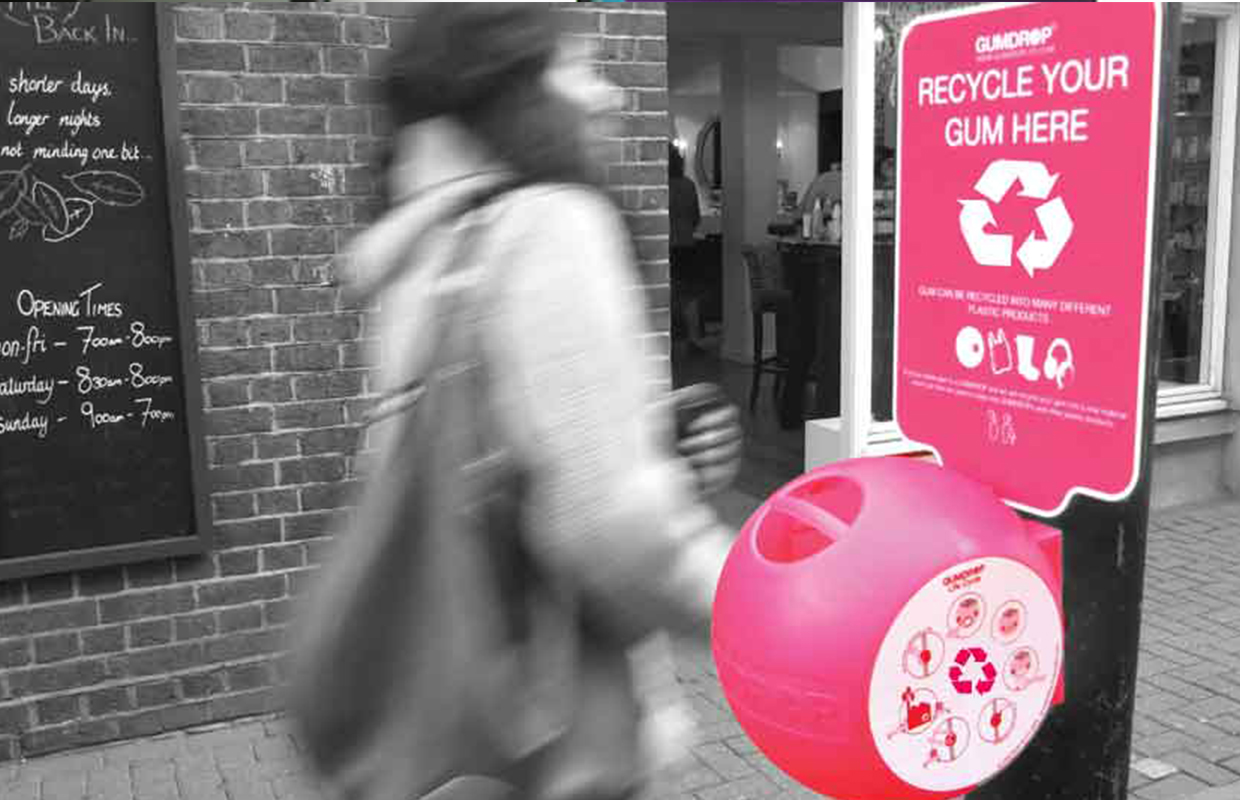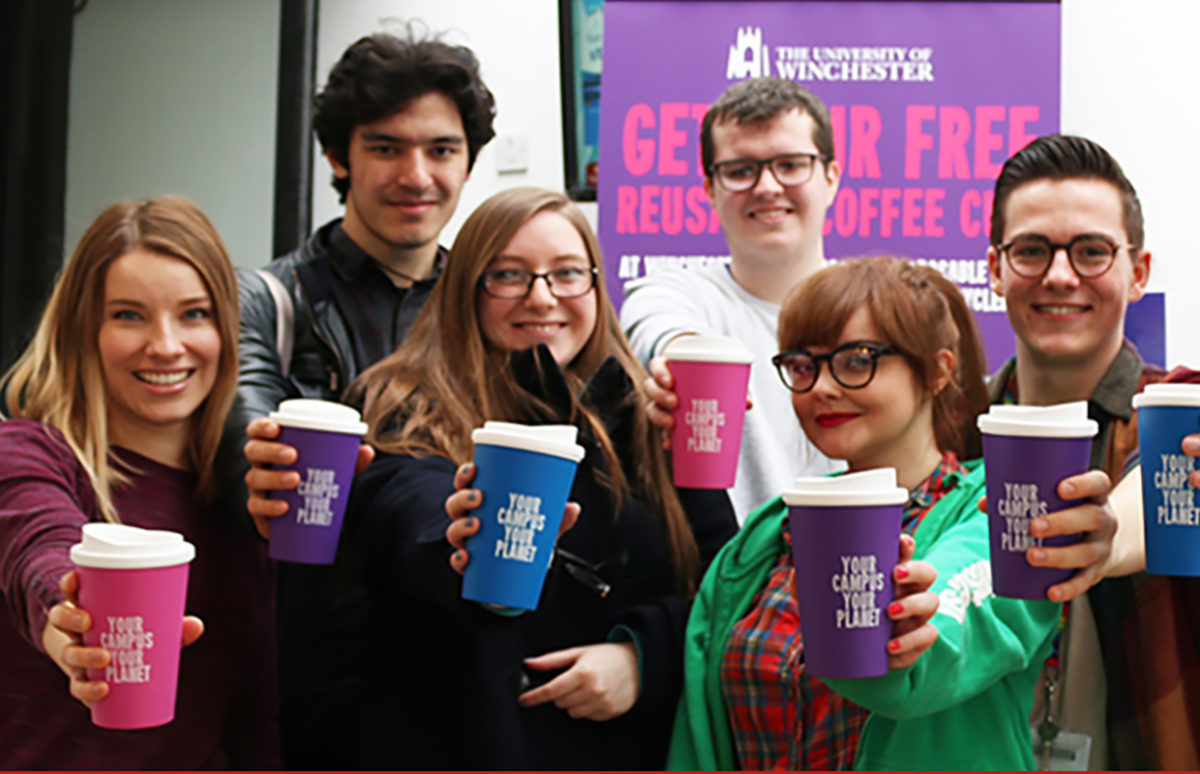A British university made progress on two environmental problems with one successful campaign: it got rid of unsightly used chewing gum littered about the campus and significantly reduced use of unrecyclable disposable coffee cups. How? By getting students to put the chewing gum into special bins, then using the recycled gum to make free re-usable cups to distribute to students.
Winchester University in southern England takes its responsibilities to the environment seriously. It has one of the lowest carbon footprints of any British higher education establishment. So several years ago it introduced a discount in campus catering outlets for customers who brought a re-usable cup for their hot drink. The campus used to get through over 190,000 disposable cups a year: cups that add to landfill since they are rarely recycled. The University offered a 25 pence discount to customers who brought their own cup. But only 3% of drinks sales were in re-usable cups.
The Carrot and the Stick
So, in 2016, the University reversed the logic. They reduced the price of hot beverages by 25p, but then charged 25p if people wanted a disposable cup. Re-usable cup use soared: it has gone from 3% to 30%. Psychologically, people were more motivated by not paying more than the possibility to pay less.
Chewing-Gum Cups
The University encouraged the trend by giving away free re-usable cups to new students and staff. And users could feel triply good about using the cups:
- They saved waste.
- The cups themselves were made of recycled materials.
- 20% of the cup material is recycled chewing gum that has been collected on campus. Special Gumdrop bins allow people to dispose of their gum cleanly and know it will be recycled. In addition, it keeps the campus clean and saves the university money cleaning up chewing-gum mess.

Gumdrop Inventor
Gumdrop is the brainchild of 34-year-old Anna Bullus. It started as a personal project when she was studying 3D Design at university. She decided to pick up every piece of litter she could, and try to find out what happened to it in the waste chain: could it be recycled. She discovered that chewing-gum was not only an expensive eye-sore but it couldn't be recycled.
The average cost of a piece of chewing gum is 3p. The cost to remove a piece of discarded gum is 10p.
Local councils in Britain spend £150 million (167 million Euros) every year removing chewing gum litter from the streets.
So as her final project at university, Anna set about finding a way to recycle it. Once she developed a re-usable material, she used it to make the Gumdrop bins that allow the gum to be collected and recycled.
In 2009, she launched her company, and her bins are now being used by schools, universities, leisure parks and towns across the UK. The gum collected of one Gumdrop bin can provide enough material to make three more bins, or a widening range of other products like Frisbees, dog bowls, mobile-phone covers… and re-usable coffee cups!
Find Out More
This short video about Winchester University's experiment is easy enough to use with pupils from A2+.
Copyright(s) :
University of Winchester
Gumdrop Ltd





